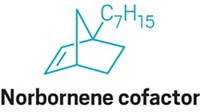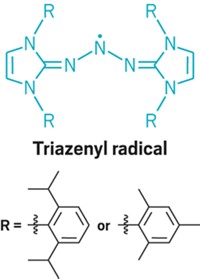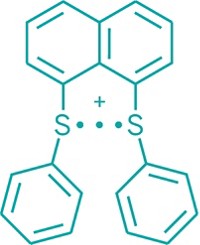Advertisement
Grab your lab coat. Let's get started
Welcome!
Welcome!
Create an account below to get 6 C&EN articles per month, receive newsletters and more - all free.
It seems this is your first time logging in online. Please enter the following information to continue.
As an ACS member you automatically get access to this site. All we need is few more details to create your reading experience.
Not you? Sign in with a different account.
Not you? Sign in with a different account.
ERROR 1
ERROR 1
ERROR 2
ERROR 2
ERROR 2
ERROR 2
ERROR 2
Password and Confirm password must match.
If you have an ACS member number, please enter it here so we can link this account to your membership. (optional)
ERROR 2
ACS values your privacy. By submitting your information, you are gaining access to C&EN and subscribing to our weekly newsletter. We use the information you provide to make your reading experience better, and we will never sell your data to third party members.
Synthesis
Carboryne Insertion Goes Two Ways
Reactive boron-carbon clusters have two resonance forms that exhibit significantly different reactivity patterns
by Stephen K. Ritter
March 28, 2011
| A version of this story appeared in
Volume 89, Issue 13
Researchers in China have discovered that reactive boron-carbon clusters called carborynes, C2B10H10, which are in effect three-dimensional versions of benzyne, can exist in two resonance forms that exhibit significantly different reactivity patterns (J. Am. Chem. Soc., DOI: 10.1021/ja201126h). Last year, Sunewang R. Wang, Zaozao Qiu, and Zuowei Xie at the Chinese University of Hong Kong reported that carborynes can insert into a C–C bond of aromatic rings in a [2 + 2] cycloaddition, expanding the six-membered ring of anisoles to eight-membered rings (shown, top). The team has discovered that carborynes can also insert into the C–H bond of diethyl ether (shown, bottom). After conducting a set of kinetics experiments, the team concluded that carborynes are best described as resonance hybrids with bonding and biradical forms: The bonding form reacts with aromatics to give cycloaddition products, whereas the biradical form undergoes C–H insertions with aliphatic ethers. The pair of reactions serve as a new strategy for generating functionalized carboranes, the researchers note, which feature extensively in the synthesis of polymers, ceramics, catalysts, and radiopharmaceuticals.





Join the conversation
Contact the reporter
Submit a Letter to the Editor for publication
Engage with us on Twitter